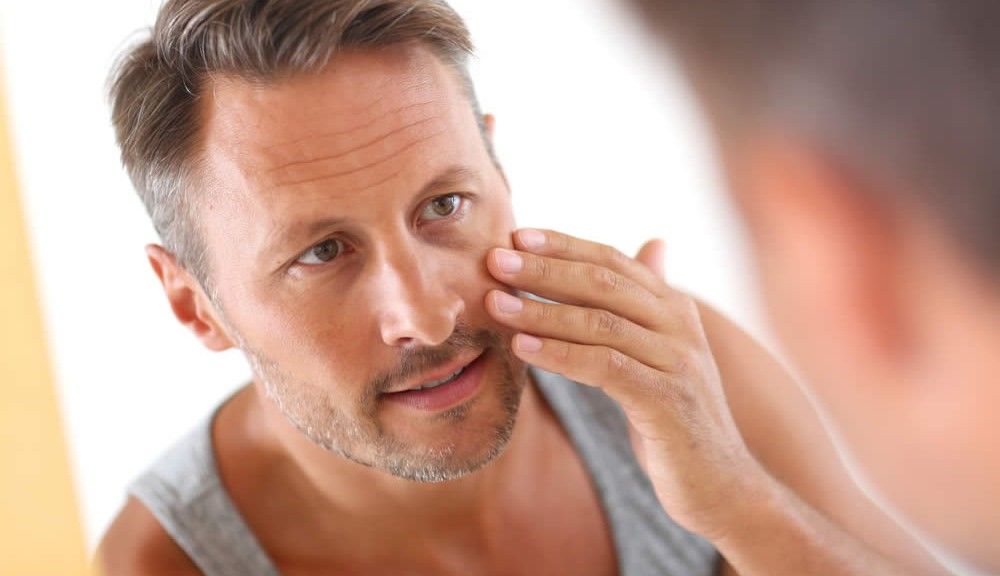
Previous
Newly Revealed Health Risk Linked to Fatty Liver Disease

Next
Liver Disease and Multivitamins
Four Facial Liver Health Clues
Typically known only by practitioners of Traditional Chinese Medicine, discover which four facial signs could foretell of a liver problem.
A centuries old system of healing, Traditional Chinese Medicine (TCM) is known to reveal aspects of a person’s health without a single lab test being ordered. Many may think that a healer guessing correctly about health issues after a short consultation harbors psychic powers. However, the knowledge used for an observational health assessment has nothing to do with clairvoyance. Different from Western physicians primarily depending on imaging studies, blood tests and biopsies for assessing liver health, practitioners of TCM view facial observation as a crucial liver assessment tool.
Visual diagnosis is a surprisingly reliable practice for uncovering a person’s strengths and weaknesses. As the most revealing part of the body that provides insight into the internal organ systems, the face can divulge several secrets about a person’s liver health. Although years of schooling in TCM is required to fully grasp facial observation and diagnosis, a crib sheet on four facial clues that indicate liver imbalances is described below:
1. Between the Eyes – The area between the eyebrows relates to the condition of the liver. A vertical line between the eyebrows may indicate liver problems, ranging from dietary concerns to emotional issues. Evidenced by a crease in the forehead’s center, excessive fat in the diet or food intolerances can negatively impact the liver. In addition, the liver is the organ that holds anger – and can be injured from rage. A precursor to congestion in the liver, a deep frown line is frequently found on those who either suppress their anger or get angry quickly.
2. The Eyeballs Themselves – There are three indicators of a possible liver imbalance detected on the eyeball. The first is a white ring bordering the colored part of the eye. This white ring may be a sign of fatty deposits caused by high cholesterol. High cholesterol is one of the leading risks for developing fatty liver disease. The second is a red appearance to the whites of the eyes (sclera). If not related to environmental factors or a cold or flu, reddened sclera could be an indication of high blood pressure – a condition that could be caused by advanced liver disease. The third is a yellowish color to the sclera. Yellow eyes are an indicator of jaundice – an excess of bilirubin in the blood. Because the liver is responsible for removing bilirubin from the blood, a buildup of bilirubin often points to a problem with liver function.
3. Cracks Beside the Mouth – Dehydration, iron-deficient anemia or environmental factors can precede dry, sore cracks at the sides of the mouth. However, these cracks can also be caused by diabetes. The high blood glucose levels characteristic of diabetes encourages the growth of candida, a yeast-like infection which attacks the thin dermis at the corners of the mouth. Individuals with diabetes are at increased risk of non-alcoholic fatty liver disease – a condition affecting a quarter of American adults.
4. Left Cheek Anomalies – In TCM, the left cheek corresponds to the liver organ system. Therefore, broken capillaries and redness, especially up next to the bridge of the nose, indicate heat, inflammation or congestion of toxins in the liver – signs that liver health needs attention.
Most people don’t realize that their face provides information about what’s going on beneath the surface. While TCM has mastered the art and science of reading the body’s language over its five thousand year practice, extensive training is required to translate these nuances. However, paying attention to and detecting subtle changes in one’s appearance can help individuals realize when an imbalance occurs. By being aware of these four facial clues to a liver imbalance, those in the know can address a liver health concern before it transforms into something more severe.
http://health.yahoo.net/experts/drmao/what-your-face-reveals-about-your-health/, What Your Face Reveals About Your Health, Dr. Maoshing Ni, Retrieved February 25, 2011, Yahoo! Inc., 2011.
http://www.care2.com/greenliving/read-your-face-know-your-health-condition.html?page=4, What Your Face Says About Your Health, Delia Quigley, Retrieved February 25, 2010, care2.com, Inc., 2011.
http://www.dailymail.co.uk/health/article-475174/Is-illness-staring-face-Symptoms-spot-mirror.html, Is illness staring you in the face? Symptoms you can spot in the mirror, Angela Epstein, Retrieved February 25, 2011, Associated Newspapers, Ltd., 2011.
http://yourbeautyspot.ninemsn.com.au/bodycare/392337/what-your-face-says-about-your-health, What Your Face Says About Your Health, Retrieved February 25, 2011, ninemsn Pty Ltd, 2011.






